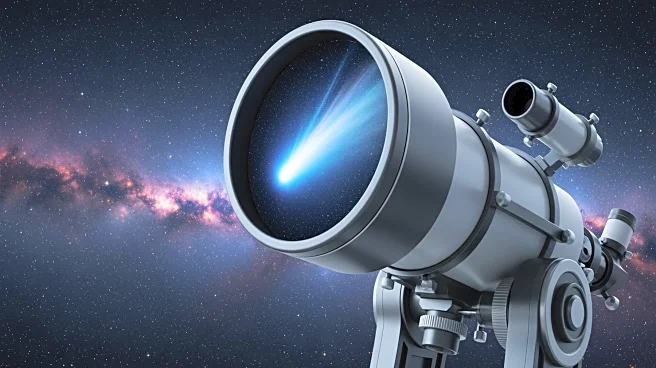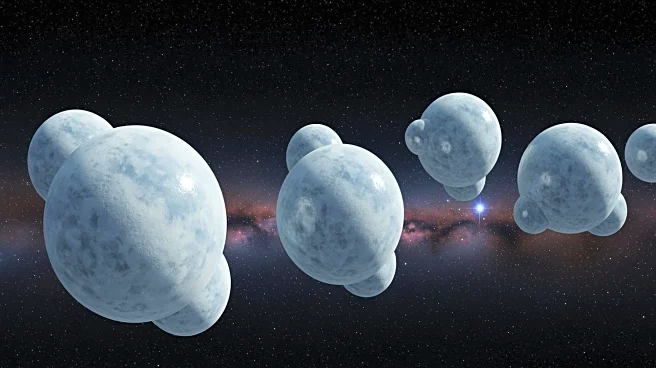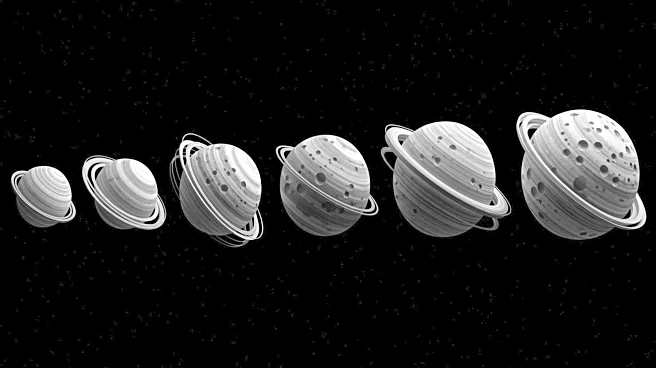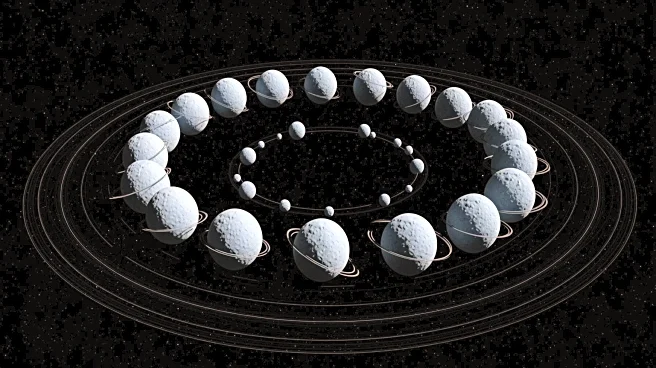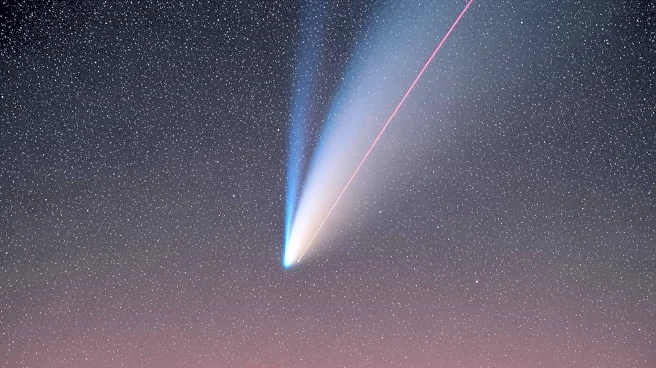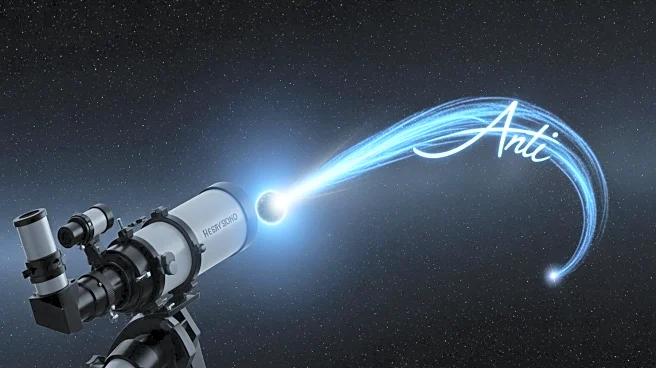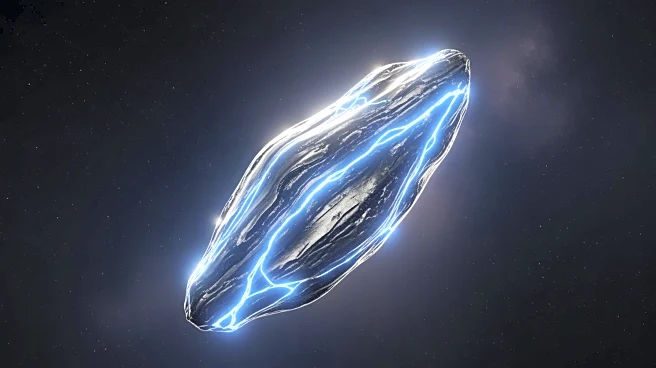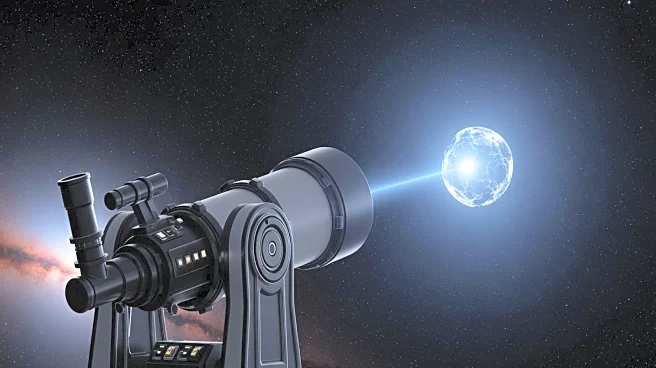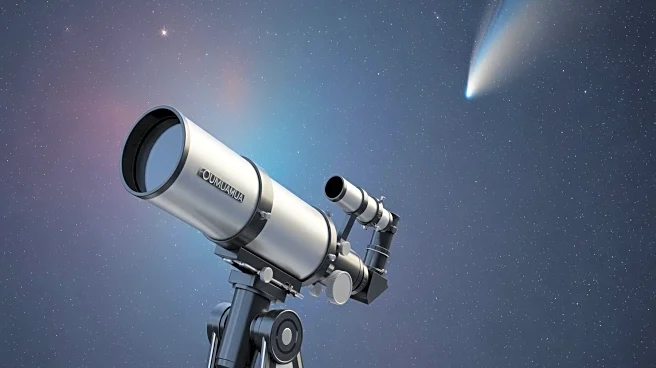What's Happening?
The Gemini South telescope has captured detailed images of the interstellar comet 3I/ATLAS, which is currently passing through our solar system. Discovered on July 1, 2025, this comet is the third known
interstellar object detected in our cosmic neighborhood. The images reveal a growing tail and coma, indicating increased activity as the comet approaches the Sun. At the time of imaging, 3I/ATLAS was 277 million miles from Earth, with its closest approach expected in December 2025. NASA has confirmed that the comet poses no threat to Earth.
Why It's Important?
The observation of 3I/ATLAS provides a unique opportunity to study an interstellar object, offering insights into the composition and behavior of comets from other star systems. The data collected can enhance our understanding of planetary formation processes, suggesting that similar mechanisms may occur throughout the galaxy. This research could have implications for our knowledge of the solar system's origins and the potential for life elsewhere in the universe. The study of such objects also helps refine detection and tracking techniques for future interstellar visitors.
What's Next?
3I/ATLAS will continue to be observed by a range of telescopes, including the Hubble Space Telescope and the James Webb Space Telescope, to gather more data on its composition and trajectory. The comet will make its closest approach to the Sun on October 30, 2025, before heading back into interstellar space. Scientists will use this period to conduct further analyses, hoping to uncover more about the comet's origins and the conditions of its home star system. These observations will contribute to a broader understanding of interstellar objects and their role in the cosmos.
